Trump to impose 100% tariff on China starting November 1
Robit Oyj (HEL:ROBIT) reported a significant decline in sales and profitability in its Q2 2025 presentation, as the drilling solutions provider continues to face challenges from weak construction markets and adverse currency movements. The company’s stock traded at €1.14 on August 11, near its 52-week low of €1.14, reflecting investor concerns about the company’s performance.
Quarterly Performance Highlights
Robit’s Q2 2025 results showed substantial deterioration across key metrics. Orders received decreased by 18.0% to €20.7 million compared to €25.2 million in the same period last year. Net sales declined even more sharply, falling 20.4% to €19.6 million from €24.6 million in Q2 2024. In constant currencies, the decrease was 17.8%.
The company’s profitability suffered significantly, with EBIT declining to -€0.6 million from €0.7 million in the prior year, representing -3.1% of net sales compared to 2.7% previously. Management attributed this deterioration primarily to significant negative changes in exchange rates.
As shown in the following chart of net sales and EBITDA trends, the company has experienced volatility in its financial performance over recent quarters:
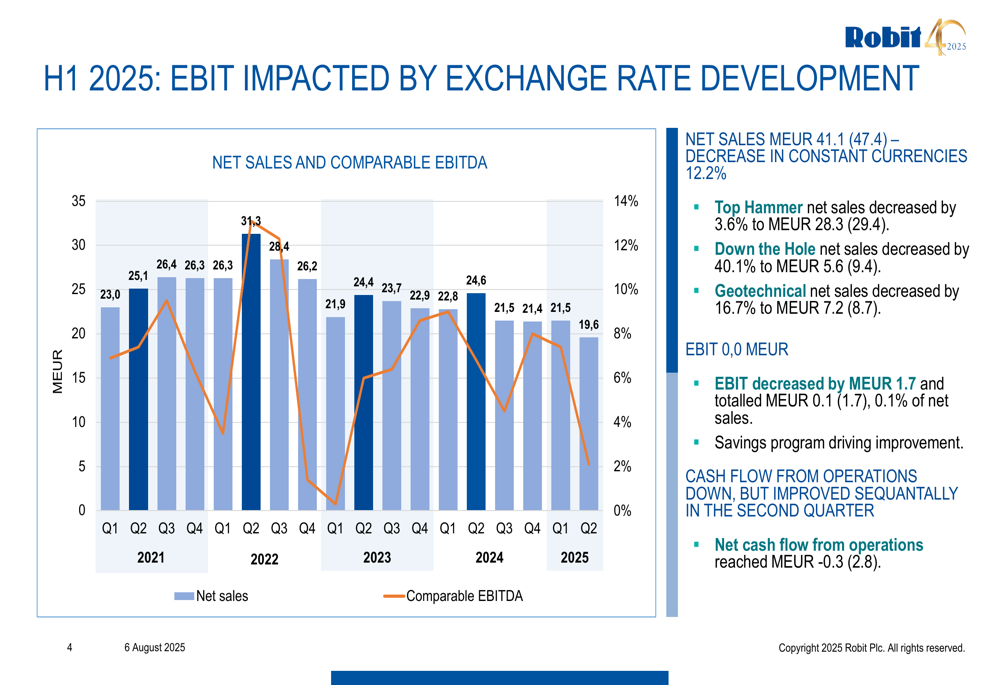
For the first half of 2025, Robit reported net sales of €41.1 million, down from €47.4 million in H1 2024, representing a 12.2% decrease in constant currencies. EBIT for H1 2025 was just €0.1 million compared to €1.7 million in the same period last year, resulting in an EBIT margin of only 0.1% versus 3.7% previously.
Regional performance showed significant variation, with Asia being the only bright spot, delivering 2.2% growth. Other regions experienced declines, with EMEA down 6.7%, Americas down 5.9%, and Australasia showing a dramatic 46.4% decrease.
The geographical breakdown of sales is illustrated in this regional chart:
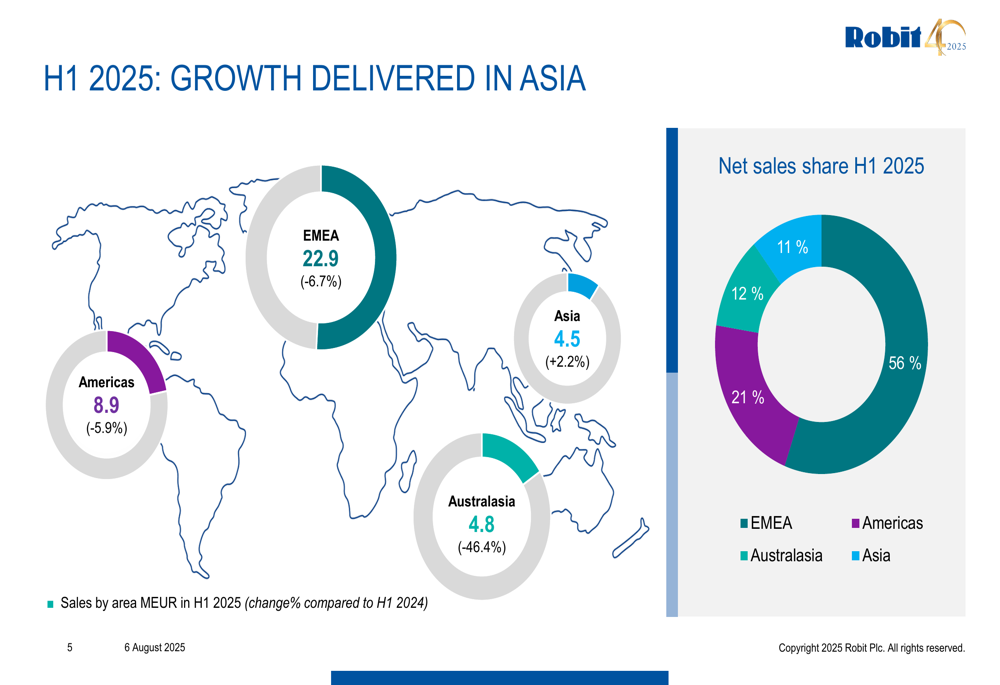
Strategic Initiatives
In response to challenging market conditions, Robit is advancing its cost savings program, which the company expects to contribute €800,000 positively in 2025, with targeted annual savings of €2 million. Management indicated that the renewal of the operating model would be finalized during Q3 2025.
CEO Arto Halonen emphasized the company’s strategic priorities during the presentation: "Back to Growth track is clearly the number one theme," while also highlighting the importance of the cost-saving initiatives.
Despite financial pressures, Robit continues to invest in product innovation. The company showcased two key product developments in its presentation:
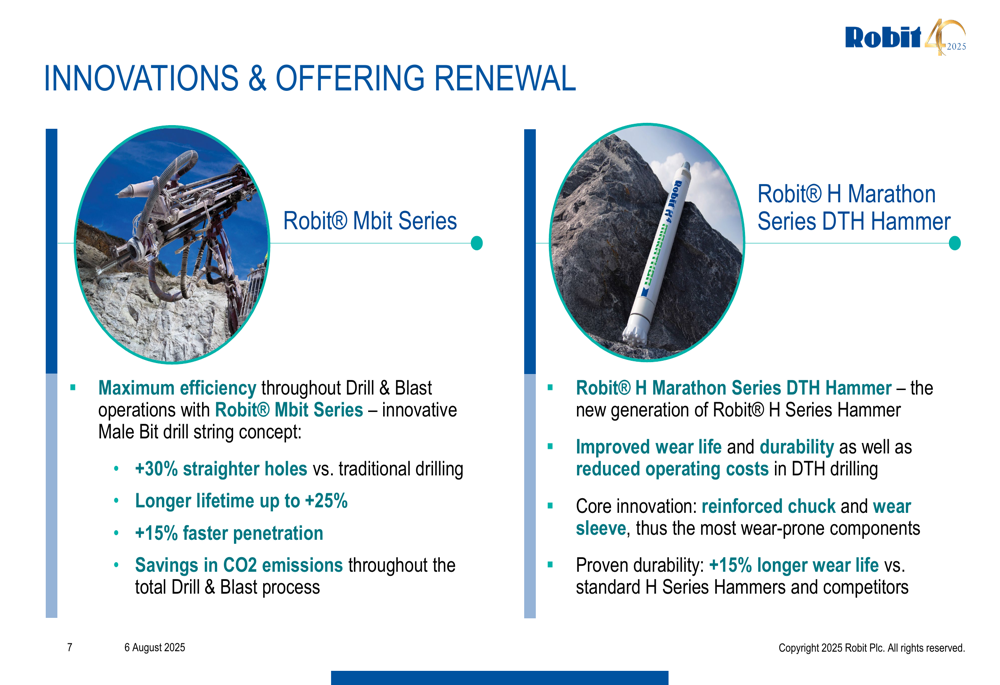
The Robit® Mbit Series promises significant performance improvements, including 30% straighter holes compared to traditional drilling, up to 25% longer lifetime, and 15% faster penetration. Similarly, the Robit® H Marathon Series DTH Hammer offers improved wear life and durability, with 15% longer wear life compared to standard hammers.
Detailed Financial Analysis
Robit’s financial position showed some concerning trends. Cash and cash equivalents at the end of Q2 2025 stood at €7.6 million, substantially lower than the €13.5 million reported a year earlier. Total (EPA:TTEF) assets decreased to €84.5 million from €97.5 million in Q2 2024.
Net working capital development showed some improvement in Q2 but remained elevated:
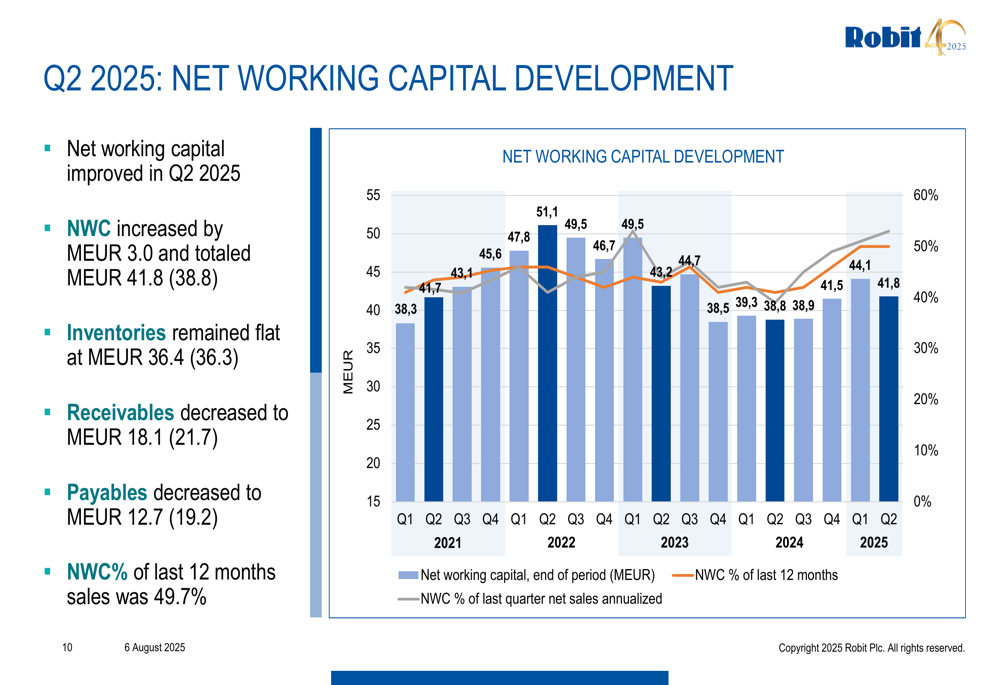
Net working capital increased by €3.0 million year-over-year to €41.8 million. While inventories remained relatively flat at €36.4 million, receivables decreased to €18.1 million from €21.7 million, and payables decreased to €12.7 million from €19.2 million. Net working capital as a percentage of last 12 months sales was 49.7%, indicating potential inefficiencies in working capital management.
The company’s capital structure has deteriorated somewhat, with net debt increasing to €20.8 million from €16.4 million in the comparable period:
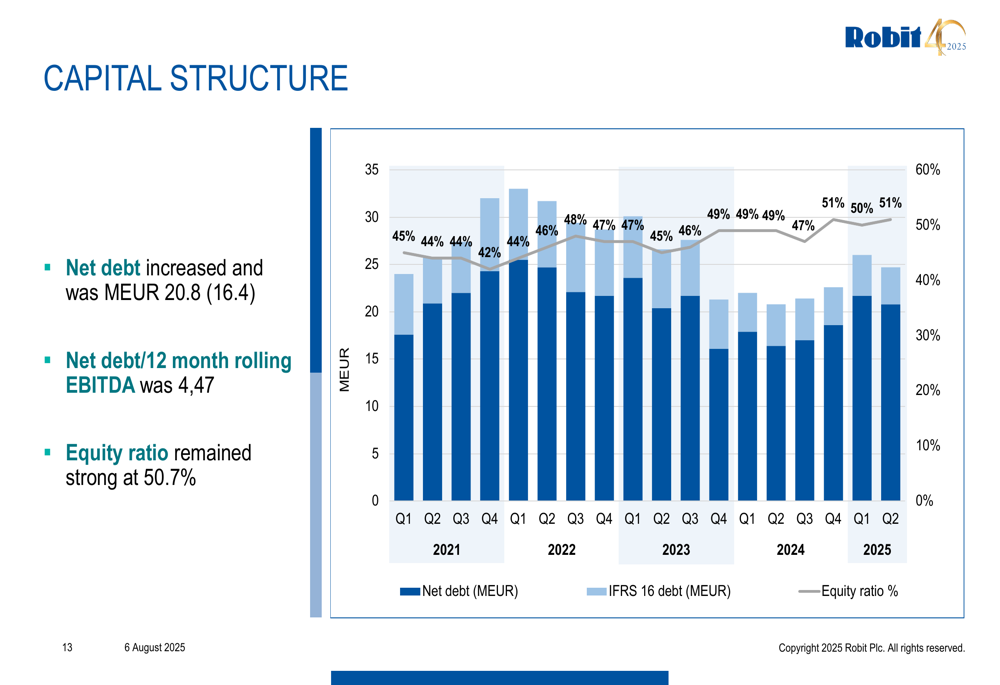
Net debt to 12-month rolling EBITDA ratio stood at 4.47, a level that may raise concerns about the company’s debt servicing capacity. However, the equity ratio remained strong at 50.7%, providing some financial stability.
Sustainability Progress
Robit highlighted progress in its sustainability initiatives, with emission intensity 44.8% below the benchmark year of 2020, representing a 5 percentage point improvement from the end of 2024. The company’s sustainability KPIs showed mixed results:
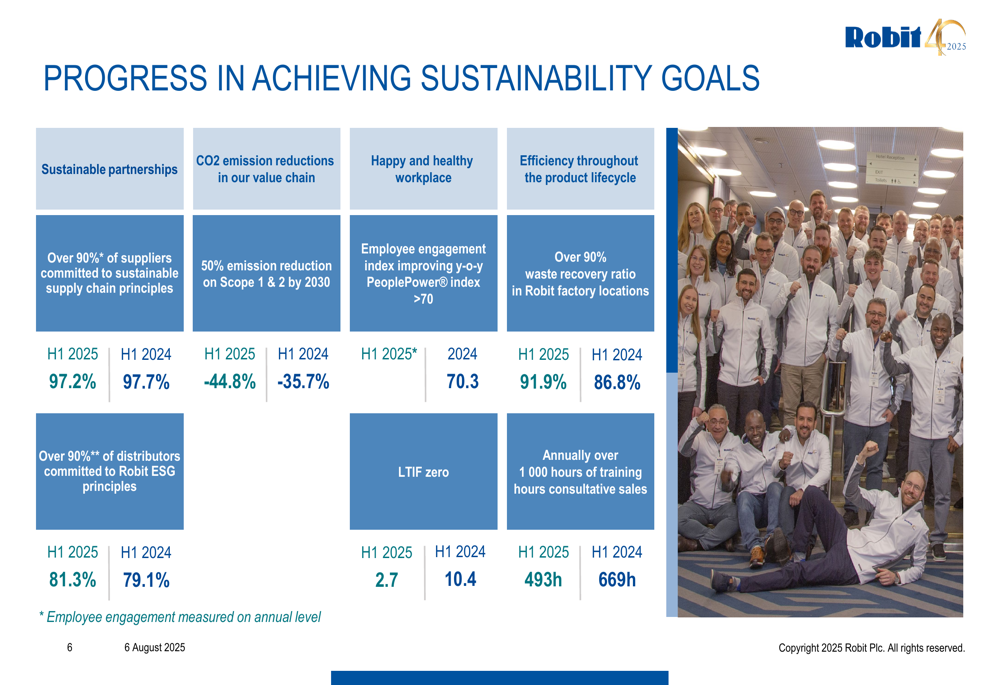
Notable achievements included 97.2% of suppliers committed to sustainable supply chain principles and a waste recovery ratio of 91.9% in Robit factory locations. The company’s lost time injury frequency (LTIF) improved significantly to 2.7 from 10.4 in H1 2024.
Forward-Looking Statements
Robit’s outlook for the remainder of 2025 remains cautious. The company expects net sales to decline compared to 2024, with comparable EBIT profitability in euros projected to remain at the same level or decline compared to 2024.
The company’s long-term financial targets and current performance are summarized in the following slide:
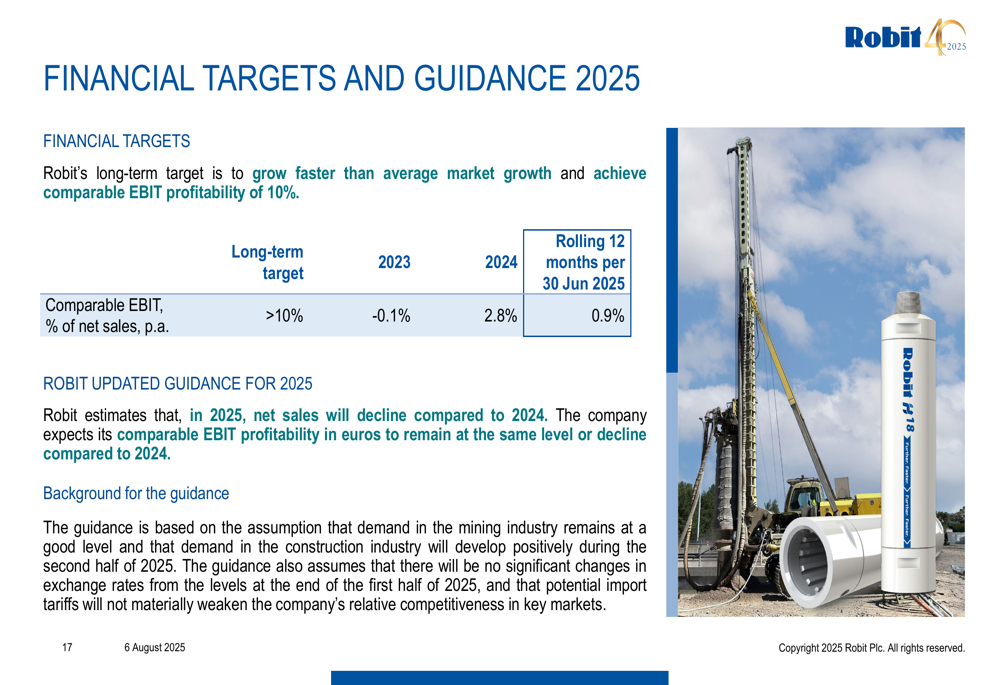
Robit maintains its long-term target of growing faster than the average market and achieving comparable EBIT profitability of 10%. However, current performance falls significantly short of this target, with rolling 12-month EBIT at just 0.9% as of June 30, 2025.
For 2025, management has outlined three key focus areas: returning to growth track, improving supply chain management, and enhancing product competitiveness. The company aims to drive growth in Top Hammer and Geotechnical segments while recovering Down the Hole sales, particularly in North America, Australia, and Africa.
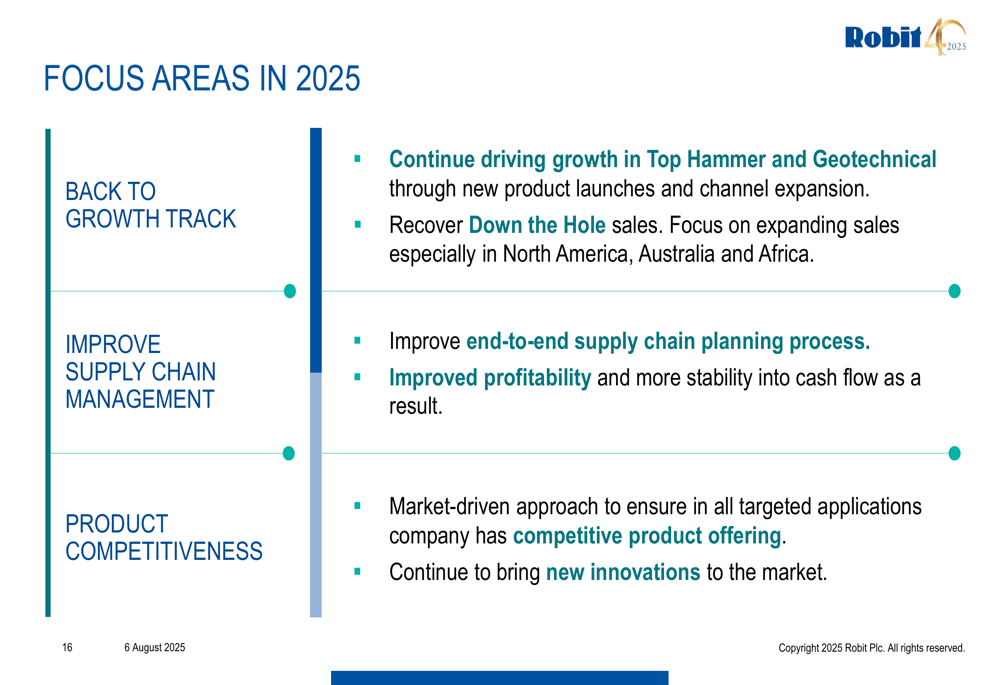
Despite current challenges, Robit remains committed to its strategic direction, balancing cost-saving measures with continued investment in innovation and sustainability. However, investors may need to exercise patience as the company navigates through this difficult period of declining sales and profitability pressures.
Full presentation:
This article was generated with the support of AI and reviewed by an editor. For more information see our T&C.
